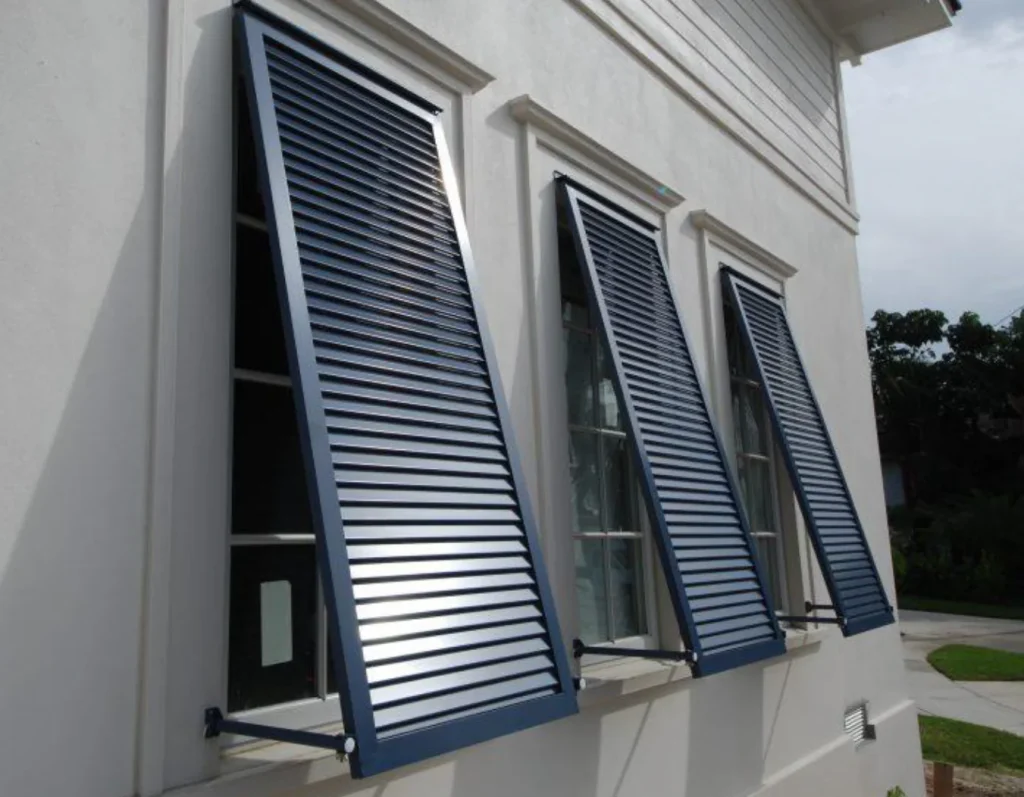Homeowners know that a truly protected home requires thinking about every vulnerable point where wind and water can cause damage.
Florida’s coastal climate doesn’t give much room for error. From powerful hurricane winds that can exceed 150 miles per hour to torrential rainfall that tests every seal and joint, homes face relentless pressure during storm season. The good news? Strategic upgrades across multiple areas of your property can dramatically reduce risk and give you absolute peace of mind when the next storm warning appears.

Most homes have the same vulnerability: standard windows and doors that were never designed to handle hurricane conditions. When wind speeds climb, these openings become the weakest links in your home’s protective shell.
Think about what happens during a major storm. Wind doesn’t just blow against your house; it searches for any way inside. Once air gets through a broken window or compromised door, pressure builds up in your home’s interior. That internal pressure can literally lift your roof off or blow out walls.
Traditional glass shatters easily when struck by flying debris. A single broken window during a hurricane can transform a manageable situation into a catastrophic one in seconds. Water pours in, wind pressure surges, and the damage multiplies exponentially from that single point of failure.
Impact windows and doors change the equation completely. These products feature laminated glass that remains intact even when struck by windborne debris. The glass may crack, but it stays in the frame, maintaining your home’s protective barrier.
The construction goes far beyond just stronger glass. Impact units use reinforced frames, multiple weather seals, and anchoring systems designed specifically for extreme wind loads. They’re tested against both large and small projectiles at various speeds, simulating real hurricane conditions.
Installation quality matters just as much as the product itself. Even the best impact window fails if it’s not properly secured to your home’s structure. Professional installation accounts for your wall composition, ensures proper flashing around openings, and uses the correct anchoring methods for maximum strength.
Your roof bears the brunt of hurricane winds. As wind flows over and around your home, it creates powerful uplift forces that try to peel the roof structure away from your walls. Many older homes use basic toe-nail connections between roof trusses and wall plates. These connections weren’t designed for modern storm loads.
Hurricane clips and straps provide dramatically better resistance. These metal connectors wrap around the connection point between your roof structure and walls, creating a mechanical bond that can withstand thousands of pounds of uplift force. Upgrading these connections represents one of the most effective structural improvements a homeowner can make.
Roof decking attachment also plays a major role. The sheathing under your shingles needs proper spacing and the right fasteners to stay intact during extreme winds. Six-inch nail spacing instead of twelve-inch spacing might seem like a small detail, but it can mean the difference between a roof that stays on and one that becomes airborne.
Roof age tells part of the story. If your roof approaches fifteen or twenty years old, replacement might make more sense than patching and hoping. A new roof installation gives you the opportunity to upgrade every vulnerable component at once.
Look for warning signs like:
Modern roofing materials offer better wind ratings than older products. Impact-resistant shingles resist damage from hail and debris. Proper underlayment creates a secondary water barrier if shingles do get damaged. These improvements work together to protect your home even when conditions get severe.

Siding does more than make your home look attractive. It serves as the first barrier against wind-driven rain and helps protect your home’s structure from moisture damage. Standard vinyl siding offers minimal protection during hurricanes because it’s designed for normal weather, not extreme conditions.
Wind gets behind poorly secured siding panels and creates pressure that pops them off. Water follows wind, finding every gap and seam. Once moisture penetrates behind your siding, it can rot structural members, destroy insulation, and create mold problems that last long after the storm passes.
Soffits and fascia represent particularly vulnerable areas. These components under your roof overhang face intense wind pressure that can rip them away, exposing your roof structure to water infiltration. Many older homes have thin aluminum or vinyl soffits that bend and tear easily under stress.
Modern fiber cement siding provides substantially better storm protection than traditional options. Products like James Hardie siding won’t rot, warp, or deteriorate from moisture exposure. They resist impact damage from flying debris and maintain their structural integrity even when saturated with water.
Proper installation makes all the difference with any siding system. Correct flashing around openings prevents water intrusion. Secure fastening at recommended intervals keeps panels attached during high winds. Quality moisture barriers behind the siding provide backup protection when wind-driven rain penetrates the outer layer.
Coastal homes benefit from materials specifically rated for high-moisture environments. Look for products that carry ICC-ES approval for high-velocity hurricane zones. These certifications verify that the materials have been tested and proven effective in extreme weather conditions common to Florida’s Gulf Coast.

Storm shutters provide an additional layer of protection that can save your windows and doors even if impact glass cracks. Different shutter systems suit different needs and budgets, but all share the same goal: creating a physical barrier that stops flying debris before it reaches your windows.
Accordion shutters attach permanently to the sides of window and door openings. When storms approach, homeowners simply unfold and lock them into place. These shutters work well for people who may have limited time or physical ability to prepare their homes quickly.
Roll-down shutters offer convenience and clean aesthetics. They are stored in compact housings above openings and deployed with manual or electric operation. The downside? Higher cost and potential mechanical failure if not properly maintained.
Impact panels provide economical protection but require storage space and physical effort to install before each storm. Homeowners must mount tracks around openings in advance, then slide panels into position and secure them with bolts or pins.
The best storm protection strategy combines multiple approaches rather than relying on a single method. Impact windows backed by storm shutters provide redundant protection. If debris damages the impact glass, shutters prevent further intrusion.
Consider your lifestyle and abilities when choosing protection systems. A family with young children might prefer permanent shutters that can be deployed quickly. Older homeowners might choose impact windows that don’t require pre-storm preparation. Some people mix systems, using removable panels for large openings and permanent shutters for smaller windows.
Don’t forget garage doors in your protection planning. These large openings are subject to significant wind pressure and often fail first during hurricanes. Reinforcement systems or wind-rated garage doors prevent failure that could pressurize your home’s interior.
Regular maintenance prevents small problems from becoming major vulnerabilities during storms. Walk around your property several times each year, looking specifically for potential hazards and weak points that need attention.
Tree branches within ten feet of your roof pose serious risks. Heavy winds turn these branches into battering rams that can puncture roofing, break windows, or damage siding. Professional trimming removes the threat while keeping your trees healthy.
Items that become dangerous projectiles during storms:
Check flashing around chimneys, vent pipes, and other roof penetrations. These areas frequently develop leaks as the sealant deteriorates over time. Addressing minor flashing problems before storm season prevents significant water intrusion during heavy rains.
Coastal properties are subject to accelerated wear from salt air, higher humidity, and frequent rain. Schedule professional inspections at least once per year to identify developing problems before they compromise your home’s storm readiness.
Pay attention to caulking and weatherstripping around all openings. These seals degrade faster in Florida’s climate and need replacement more frequently than in other regions. Fresh seals keep water out and maintain the air barrier that protects your home’s structure.
Attic ventilation systems deserve regular inspection. Blocked soffit vents or damaged ridge vents create moisture problems that weaken your roof structure over time. Proper airflow helps your roof withstand storm stress and extends its service life between replacements.
Not necessarily. While impact windows provide excellent protection on their own, adding storm shutters adds an extra layer of protection. Many homeowners in high-risk coastal areas choose both. Impact windows protect year-round with no maintenance required, while shutters offer additional security during significant storms. The combination also provides better protection if window frames become compromised. For homes with standard windows, shutters remain the most economical storm protection option until complete window replacement becomes feasible.
Hurricane protection improvements typically recover 70 to 85 percent of their cost in added home value. Impact windows and quality siding upgrades appeal strongly to buyers in storm-prone areas. Beyond resale value, these upgrades deliver savings through lower insurance premiums, reduced energy costs, and avoided storm damage. Many Florida insurers offer 10 to 45 percent discounts for approved hurricane protection features. The real value shows up when your protected home survives a major storm while neighboring properties suffer tens of thousands in damage.
Professional installation of impact windows for an average three-bedroom home typically takes three to five days. Larger homes or complex architectural features may extend this timeline to one or two weeks. Door replacements add another day or two. The process involves removing old units, preparing openings, installing new windows with proper anchoring and flashing, then finishing interior and exterior trim. Weather can affect scheduling, so plan upgrades during Florida’s drier months when possible. Most contractors work room by room to minimize disruption.
Older Florida homes can absolutely be retrofitted for storm protection, though they may require additional structural work. Homes built before modern building codes often need reinforced wall connections to support impact windows properly. Roof structures may need upgraded hurricane straps before new roofing goes on. Frame condition matters too—rotted wood must be replaced before new siding or windows get installed. A thorough inspection reveals what reinforcements your specific home needs. The investment in proper retrofitting protects both your new improvements and your home’s underlying structure.
A professional assessment identifies your home’s specific vulnerabilities and helps prioritize improvements that provide the most protection for your investment. Experienced contractors understand how different building systems work together and can spot problems that homeowners might miss.
Mr. Build offers comprehensive exterior evaluations that examine windows, doors, siding, and structural connections. Their team has spent nearly five decades working on Florida homes.
Schedule a whole home exterior inspection with Mr. Build today and discover exactly what your property needs to withstand Florida’s toughest weather.